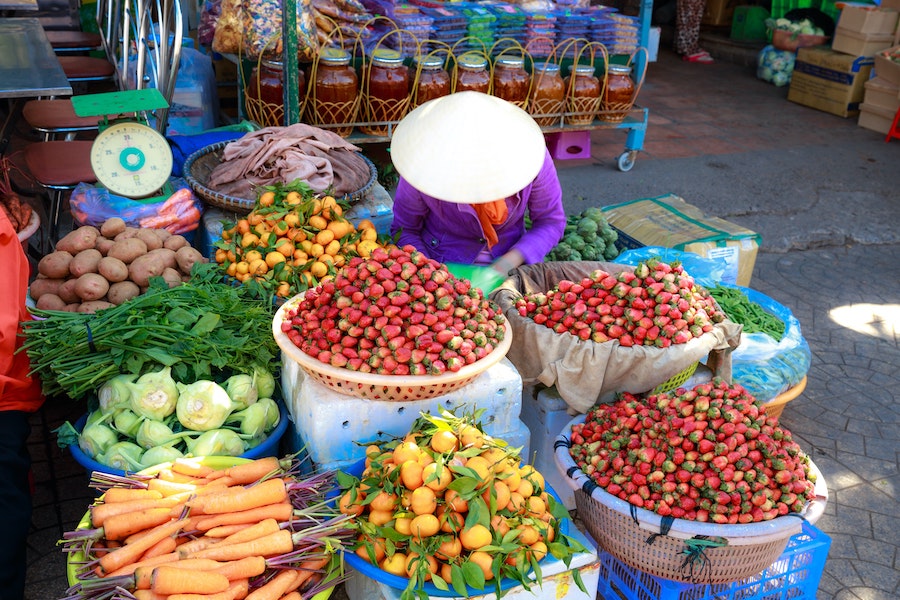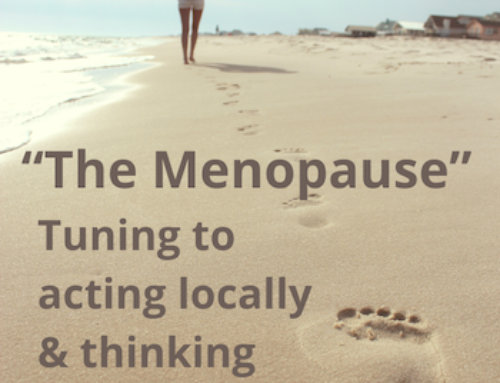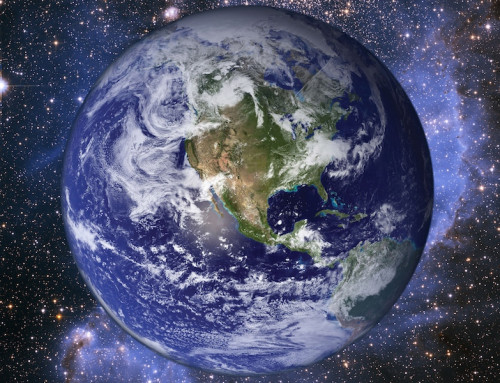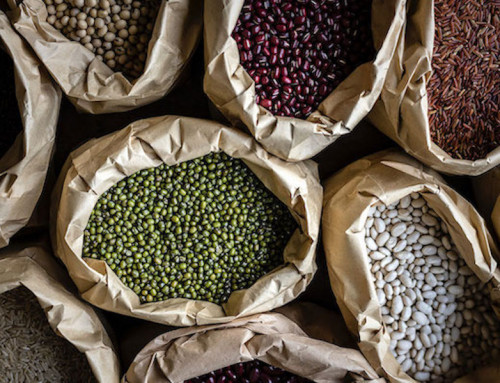Eating exclusively foods grown in your local area is a noble, but lofty ideal.
Even the most fertile food bowls in the western world, are not capable of feeding all their residents given the current food industry practices.
Nevertheless, aiming to eat foods grown and produced nearby is a worthy goal that radically impacts local economy building and reduction of travel “food miles”.
At the least, we can all avoid the fresh and frozen products that have been shipped halfway around the world.
Just say no to oranges from the USA if we live in Australia, New Zealand butter if you live in the UK, and Bulgarian frozen organic blueberries if you live anywhere other than Europe. This is because these foods require refrigerated freight, which adds significantly to global greenhouse gasses.
To increase consumption of local produce, head to your local farmers markets. There you will find seasonal and fresh foods, sometimes at competitive prices due to seasonal abundance. Of course, sometimes the cost is higher and thus less accessible for everyone to enjoy. For example, I purchased a whole chicken at my local market and paid just under twice the amount than I would have for an organic bird from the supermarket. It was the “true cost” of the bird, which was reared in the labour-heavy regenerative methods, as described in the movie Polyfaces: A World of Many Choices.
We do have choices.
I like that at the farmers markets, you get to meet the growers and give them money, instead of to megalithic supermarkets.
If you don’t have a farmers market in your area, an amazing solution is Open Food Networks. This online market can enable you to see who is growing what and when, where you live.
Open Food Networks are expanding locally, all around the world. This technology was created by some friends of mine (the very clever Kirsten and Serenity). The network enables small scale farmers to sell direct to consumers, online, without having to sell at farmers markets or through a middle-person or shop. Open Food Network enables small producers’ resource capacity to spread further while providing them with increased revenue by selling direct. Whilst it might not be as consumer convenient as an immediate purchase in a shop, an added bonus is that it can be cheaper and fresher.
In the 2020’s we need to recognise and reduce food miles.
We need to look at where the food is grown, produced and packaged. As mentioned, refusing fresh or frozen foods grown overseas is a good place to start, given both need refrigerated containers to be shipped over the oceans and roads, increasing the environmental impact and footprint of these foods even further.
Here are a few of the insights provided by Local Futures organisation, the experts in the area of local food economy, that illustrate the costly insanity of the current food industry, trade deals and tariff system:
- Mexican calves — fed American corn — are exported live to the United States, where they are butchered for meat, which is then sold in Mexico
- In 2007, Britain and Australia exchanged 20 tonnes of bottled water, just with each other
- More than half of the seafood caught in Alaska is processed in China,then much of it is sent right back to American supermarkets
This kind of business is destructive.
Eating exotic happens sometimes.
Some food only grows in certain places. For example, Brazil nuts and Maca root are native to South America. Davidson Plums and Macadamias are uniquely Australian. In these situations, choosing ethical and fair traded products, to help minimize exploitation.
One awesome use of emerging tracking technology can help to ensure transparency, so that “fair trade” really is fair, and “sustainable catches” really are good ocean management. One day soon, thanks to organisations like OpenSC and WWF, we will be able to use a QR code to ensure that what we are purchasing is contributing to a regenerative trend, and not the destructive one.
Sustainable foraging is a wonderful way to eat locally grown foods.
Learning about the food plants (including herbs, berries, nuts) and the funghi growing around you is hugely empowering.
Recognising edible species, and knowing how to prepare or cook them connects us to our locale, which is grounding and provides us with a sense of belonging that is hard to describe. And it’s fun! For example, learning to identify dandelions that grow wild, can seriously improve the interest level of your salad, not to mention an opportunity to share stories about the plants we, and our ancestors have known and enjoyed.
Sustainable practices are crucial if you want to forage.
This means:
- learning about timing of harvesting
- never taking more than the plant or funghi colony can handle
- ensuring that you don’t damage the “off the path” ecosystem
Check out Diego Bonetto’s site for additional inspiration (and tours if you are in Sydney area).
Individual Health Impacts
There are many personal benefits eating local-ish.
Enriching your connection with your local environment also means connecting with microbial life associated with your locale, potentially enhancing your microbiota.
In addition, purchasing and foraging locally, helps develop more community connection and culture with local sites and other local people. This is strengthening for local economies, supports the good work of people connecting (and respecting) the local lands and enhances individual insight of how the food has been grown/reared improves. All of these elements subtly enhance your sense of security, which balances your entire nervous system, as well as enhancing your digestive capacity.
Planetary Health Impacts
Reducing your consumption of foods grown, or manufactured a long way from where you live, means reducing ‘food miles’ which means reducing carbon emissions. It’s a subtle but powerful action to act on the climate crisis. We can all think globally and act locally on this one.
Also, when you eat local, there’s a better chance of knowing if the food you are eating has been sprayed with pesticides and herbicides, produced through slave labour or contributed to damaging populations of particular species or whole forests.
Rejuvenate your Health at Sparkle Well School
Sparkle Well School delivers step-by-step, effective and safe, health optimisation processes to provide empowerment and insights into fresh and regenerative ways of living.










